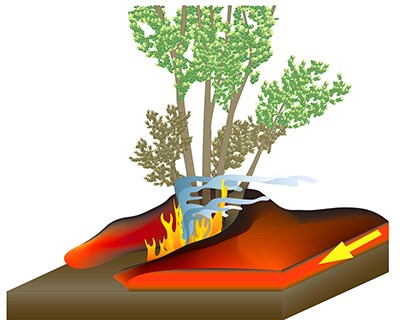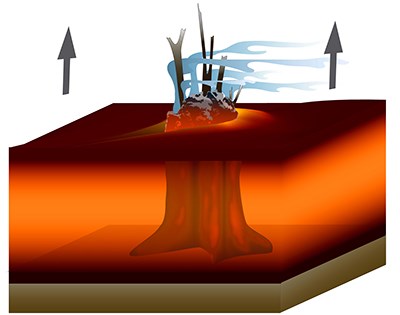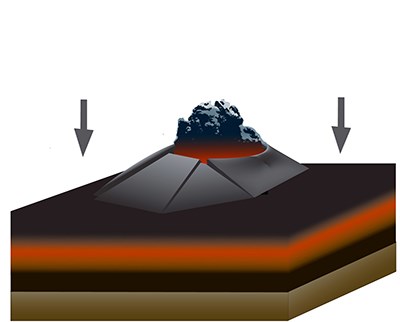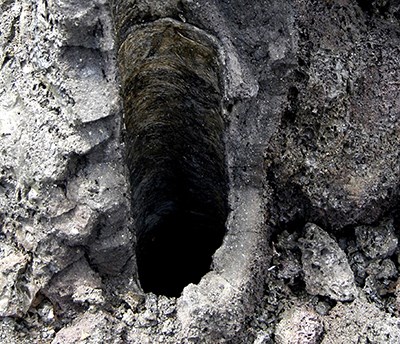|
Frozen in time, lava trees commemorate trees that once stood in the path of encroaching lava. As molten lava moves across the landscape during an eruption, it may gather around the trunks of trees. Though it ultimately destroys the living plant, the flow leaves behind a hardened sculpture. These columns of cooled lava give us an idea of what was there previously, though the forest that once existed is gone.


How Does a Lava Tree Form?1. When lava flows through a forest, it swirls around tree trunks and quickly solidifies. Moisture in the wood and gas bubbles in the rocks form excellent insulation against instant incineration. 
2. As the level of the surrounding flows rises, the trees remain encased in molds of lava. Soon a thick crust forms on the surface of the flow. 
3. After the main surge has passed, molten lava beneath the rigid crust drains away downslope, and the entire flow deflates. The crust fractures as it drops around the molds, exposing a landscape of fragile new lava trees. 
Tree MoldsLava tree molds are in some ways the opposite of lava trees. Tree molds are cavities or holes where trees stood in a lava flow. As with lava trees, the plant will burn up when the flow approaches. However, tree molds occur when the flow does not subside or deflate. By not subsiding, the flow does not expose the column of lava that makes up a lava tree.Within the national park, look for tree molds along Mauna Loa Road near Highway 11. |
Last updated: March 25, 2020
